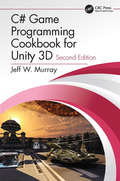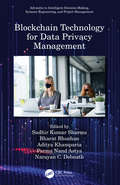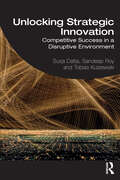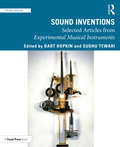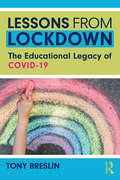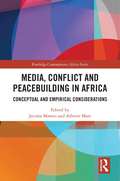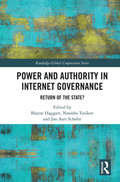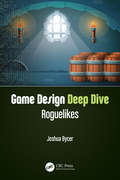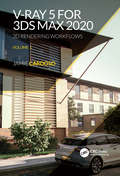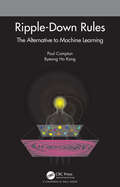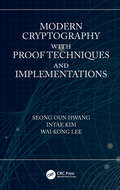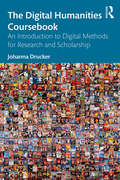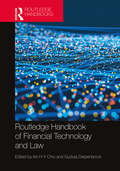- Table View
- List View
C# Game Programming Cookbook for Unity 3D
by Jeff W. MurrayThis second edition of C# Game Programming Cookbook for Unity 3D expounds upon the first with more details and techniques. With a fresh array of chapters, updated C# code and examples, Jeff W. Murray’s book will help the reader understand structured game development in Unity unlike ever before. New to this edition is a step-by-step tutorial for building a 2D infinite runner game from the framework and scripts included in the book. The book contains a flexible and reusable framework in C# suitable for all game types. From game state handling to audio mixers to asynchronous scene loading, the focus of this book is building a reusable structure to take care of many of the most used systems. Improve your game's sound in a dedicated audio chapter covering topics such as audio mixers, fading, and audio ducking effects, or dissect a fully featured racing game with car physics, lap counting, artificial intelligence steering behaviors, and game management. Use this book to guide your way through all the required code and framework to build a multi-level arena blaster game. Features Focuses on programming, structure, and an industry-level, C#-based framework Extensive breakdowns of all the important classes Example projects illustrate and break down common and important Unity C# programming concepts, such as coroutines, singletons, static variables, inheritance, and scriptable objects. Three fully playable example games with source code: a 2D infinite runner, an arena blaster, and an isometric racing game The script library includes a base Game Manager, timed and proximity spawning, save profile manager, weapons control, artificial intelligence controllers (path following, target chasing and line-of-sight patrolling behaviors), user interface Canvas management and fading, car physics controllers, and more. Code and screenshots have been updated with the latest versions of Unity. These updates will help illustrate how to create 2D games and 3D games based on the most up-to-date methods and techniques. Experienced C# programmers will discover ways to structure Unity projects for reusability and scalability. The concepts offered within the book are instrumental to mastering C# and Unity. In his game career spanning more than 20 years, Jeff W. Murray has worked with some of the world's largest brands as a Game Designer, Programmer, and Director. A Unity user for over 14 years, he now works as a consultant and freelancer between developing his own VR games and experiments with Unity.
Blockchain Technology for Data Privacy Management (Advances in Intelligent Decision-Making, Systems Engineering, and Project Management)
by Sudhir Kumar Sharma Bharat Bhushan Aditya Khamparia Parma Nand Astya Narayan C. DebnathThe book aims to showcase the basics of both IoT and Blockchain for beginners as well as their integration and challenge discussions for existing practitioner. It aims to develop understanding of the role of blockchain in fostering security. The objective of this book is to initiate conversations among technologists, engineers, scientists, and clinicians to synergize their efforts in producing low-cost, high-performance, highly efficient, deployable IoT systems. It presents a stepwise discussion, exhaustive literature survey, rigorous experimental analysis and discussions to demonstrate the usage of blockchain technology for securing communications. The book evaluates, investigate, analyze and outline a set of security challenges that needs to be addressed in the near future. The book is designed to be the first reference choice at research and development centers, academic institutions, university libraries and any institutions interested in exploring blockchain. UG/PG students, PhD Scholars of this fields, industry technologists, young entrepreneurs and researchers working in the field of blockchain technology are the primary audience of this book.
Blockchain Technology for Data Privacy Management (Advances in Intelligent Decision-Making, Systems Engineering, and Project Management)
by Sudhir Kumar Sharma Bharat Bhushan Aditya Khamparia Parma Nand Astya Narayan C. DebnathThe book aims to showcase the basics of both IoT and Blockchain for beginners as well as their integration and challenge discussions for existing practitioner. It aims to develop understanding of the role of blockchain in fostering security. The objective of this book is to initiate conversations among technologists, engineers, scientists, and clinicians to synergize their efforts in producing low-cost, high-performance, highly efficient, deployable IoT systems. It presents a stepwise discussion, exhaustive literature survey, rigorous experimental analysis and discussions to demonstrate the usage of blockchain technology for securing communications. The book evaluates, investigate, analyze and outline a set of security challenges that needs to be addressed in the near future. The book is designed to be the first reference choice at research and development centers, academic institutions, university libraries and any institutions interested in exploring blockchain. UG/PG students, PhD Scholars of this fields, industry technologists, young entrepreneurs and researchers working in the field of blockchain technology are the primary audience of this book.
Unlocking Strategic Innovation: Competitive Success in a Disruptive Environment
by Surja Datta Sandeep Roy Tobias KutzewskiThis new book explores how firms achieve competitive advantage in a disruptive, digital and globalized business landscape. An integrative framework, ‘The Four Rs of Competitive Success’, is introduced, which covers the four core pillars of global strategy: resources and capabilities, technology and innovation (recombination), internationalization and international markets (reach), and physical and virtual location (roots). It then explains how competitive advantage is achieved through an interaction of these four drivers against the backdrop of a globalized and digitized world. It is uniquely practical in its approach, combining theoretical understanding with international case studies and real-life examples throughout each chapter, including Apple, IKEA and Microsoft. Unlocking Strategic Innovation is concise, applied reading for postgraduate students studying international business, corporate strategy, innovation and digital strategy, as well as academics in the field. It will also be important reading for practitioners looking to gain further understanding of how firms compete and flourish in a global and technology-driven environment.
Unlocking Strategic Innovation: Competitive Success in a Disruptive Environment
by Surja Datta Sandeep Roy Tobias KutzewskiThis new book explores how firms achieve competitive advantage in a disruptive, digital and globalized business landscape. An integrative framework, ‘The Four Rs of Competitive Success’, is introduced, which covers the four core pillars of global strategy: resources and capabilities, technology and innovation (recombination), internationalization and international markets (reach), and physical and virtual location (roots). It then explains how competitive advantage is achieved through an interaction of these four drivers against the backdrop of a globalized and digitized world. It is uniquely practical in its approach, combining theoretical understanding with international case studies and real-life examples throughout each chapter, including Apple, IKEA and Microsoft. Unlocking Strategic Innovation is concise, applied reading for postgraduate students studying international business, corporate strategy, innovation and digital strategy, as well as academics in the field. It will also be important reading for practitioners looking to gain further understanding of how firms compete and flourish in a global and technology-driven environment.
Sound Inventions: Selected Articles from Experimental Musical Instruments (Sound Design)
by Bart Hopkin Sudhu TewariSound Inventions is a collection of 34 articles taken from Experimental Musical Instruments, the seminal journal published from 1984 through 1999. In addition to the selected articles, the editors have contributed introductory essays, placing the material in cultural and temporal context, providing an overview of the field both before and after the time of original publication. The Experimental Musical Instruments journal contributed extensively to a number of sub-fields, including sound sculpture and sound art, sound design, tuning theory, musical instrument acoustics, timbre and timbral perception, musical instrument construction and materials, pedagogy, and contemporary performance and composition. This book provides a picture of this important early period, presenting a wealth of material that is as valuable and relevant today as it was when first published, making it essential reading for anyone researching, working with or studying sound.
Sound Inventions: Selected Articles from Experimental Musical Instruments (Sound Design)
by Bart Hopkin Sudhu TewariSound Inventions is a collection of 34 articles taken from Experimental Musical Instruments, the seminal journal published from 1984 through 1999. In addition to the selected articles, the editors have contributed introductory essays, placing the material in cultural and temporal context, providing an overview of the field both before and after the time of original publication. The Experimental Musical Instruments journal contributed extensively to a number of sub-fields, including sound sculpture and sound art, sound design, tuning theory, musical instrument acoustics, timbre and timbral perception, musical instrument construction and materials, pedagogy, and contemporary performance and composition. This book provides a picture of this important early period, presenting a wealth of material that is as valuable and relevant today as it was when first published, making it essential reading for anyone researching, working with or studying sound.
Lessons from Lockdown: The Educational Legacy of COVID-19
by Tony BreslinLessons from Lockdown explores the impact of COVID-19 on our schooling systems, on the young people and families that they serve and on all who work in – and with – our schools, and asks what the long-term ramifications of the pandemic might be for the pedagogy and purpose of formal education. Drawing on the voices of more than a hundred pupils, parents and professionals, it reveals how teachers and learners are adapting practice in areas such as curriculum modelling, parental engagement, assessment and evaluation and blended and online learning. In this timely new book, Tony Breslin draws on his experience as a teacher, researcher, examiner, school governor and policy influencer to assess what the educational legacy of COVID-19 could be, and the potential that it offers for reframing how we ‘do’ schooling. Whatever your place in this landscape, Lessons from Lockdown is a must-read for all concerned about the shape and purpose of schooling systems in mature economies – schooling systems and economies set on recovering from the kind of ‘system shock’ that the pandemic has delivered.
Lessons from Lockdown: The Educational Legacy of COVID-19
by Tony BreslinLessons from Lockdown explores the impact of COVID-19 on our schooling systems, on the young people and families that they serve and on all who work in – and with – our schools, and asks what the long-term ramifications of the pandemic might be for the pedagogy and purpose of formal education. Drawing on the voices of more than a hundred pupils, parents and professionals, it reveals how teachers and learners are adapting practice in areas such as curriculum modelling, parental engagement, assessment and evaluation and blended and online learning. In this timely new book, Tony Breslin draws on his experience as a teacher, researcher, examiner, school governor and policy influencer to assess what the educational legacy of COVID-19 could be, and the potential that it offers for reframing how we ‘do’ schooling. Whatever your place in this landscape, Lessons from Lockdown is a must-read for all concerned about the shape and purpose of schooling systems in mature economies – schooling systems and economies set on recovering from the kind of ‘system shock’ that the pandemic has delivered.
Media, Conflict and Peacebuilding in Africa: Conceptual and Empirical Considerations (Routledge Contemporary Africa)
by Jacinta Maweu Admire MareThis book explores the role and place of popular, traditional and digital media platforms in the mediatization, representation and performance of various conflicts and peacebuilding interventions in the African context. The role of the media in conflict is often depicted as either ‘good’ (as symbolized by peace journalism) and ‘bad’ (as exemplified by war journalism), but this book moves beyond this binary to highlight the ‘in-between’ role that the media often plays in times of conflict. The volume does not only focus on the relationship between mass media, conflict and peacebuilding processes but it broadens its scope by critically analysing the dynamic and emergent roles of popular and digital media platforms in a continent where the semi-literate and oral communities still rely heavily on popular communication platforms to get news and information. Whilst social media platforms have been hailed for their assumed democratic and digital dividends, this book does not only focus on these positive aspects but also shines a light on dark forms of participation which are fuelling racial, gender, ethnic, political and religious conflicts in highly polarized and stratified societies. Highlighting the many ways in which traditional, digital and popular media can be used to both escalate conflicts and promote peacebuilding, this volume will be a useful resource for students, researchers and civil society groups interested in peace and conflict studies, journalism and media studies in different contexts within Africa.
Media, Conflict and Peacebuilding in Africa: Conceptual and Empirical Considerations (Routledge Contemporary Africa)
by Jacinta MaweuThis book explores the role and place of popular, traditional and digital media platforms in the mediatization, representation and performance of various conflicts and peacebuilding interventions in the African context. The role of the media in conflict is often depicted as either ‘good’ (as symbolized by peace journalism) and ‘bad’ (as exemplified by war journalism), but this book moves beyond this binary to highlight the ‘in-between’ role that the media often plays in times of conflict. The volume does not only focus on the relationship between mass media, conflict and peacebuilding processes but it broadens its scope by critically analysing the dynamic and emergent roles of popular and digital media platforms in a continent where the semi-literate and oral communities still rely heavily on popular communication platforms to get news and information. Whilst social media platforms have been hailed for their assumed democratic and digital dividends, this book does not only focus on these positive aspects but also shines a light on dark forms of participation which are fuelling racial, gender, ethnic, political and religious conflicts in highly polarized and stratified societies. Highlighting the many ways in which traditional, digital and popular media can be used to both escalate conflicts and promote peacebuilding, this volume will be a useful resource for students, researchers and civil society groups interested in peace and conflict studies, journalism and media studies in different contexts within Africa.
Power and Authority in Internet Governance: Return of the State? (Routledge Global Cooperation Series)
by Blayne Haggart Natasha Tusikov Jan Aart ScholtePower and Authority in Internet Governance investigates the hotly contested role of the state in today's digital society. The book asks: Is the state "back" in internet regulation? If so, what forms are state involvement taking, and with what consequences for the future? The volume includes case studies from across the world and addresses a wide range of issues regarding internet infrastructure, data and content. The book pushes the debate beyond a simplistic dichotomy between liberalism and authoritarianism in order to consider also greater state involvement based on values of democracy and human rights. Seeing internet governance as a complex arena where power is contested among diverse non-state and state actors across local, national, regional and global scales, the book offers a critical and nuanced discussion of how the internet is governed – and how it should be governed. Power and Authority in Internet Governance provides an important resource for researchers across international relations, global governance, science and technology studies and law as well as policymakers and analysts concerned with regulating the global internet.
Power and Authority in Internet Governance: Return of the State? (Routledge Global Cooperation Series)
by Blayne Haggart Natasha Tusikov Jan Aart ScholtePower and Authority in Internet Governance investigates the hotly contested role of the state in today's digital society. The book asks: Is the state "back" in internet regulation? If so, what forms are state involvement taking, and with what consequences for the future? The volume includes case studies from across the world and addresses a wide range of issues regarding internet infrastructure, data and content. The book pushes the debate beyond a simplistic dichotomy between liberalism and authoritarianism in order to consider also greater state involvement based on values of democracy and human rights. Seeing internet governance as a complex arena where power is contested among diverse non-state and state actors across local, national, regional and global scales, the book offers a critical and nuanced discussion of how the internet is governed – and how it should be governed. Power and Authority in Internet Governance provides an important resource for researchers across international relations, global governance, science and technology studies and law as well as policymakers and analysts concerned with regulating the global internet.
Game Design Deep Dive: Roguelikes
by Joshua BycerGame Design Deep Dive: Roguelikes examines the history and rise of the often-confusing roguelike genre. Despite being more than 30 years old, the roguelike genre remains a mystery to a lot of consumers and developers. Procedural generation, or having the game generate content, has been a cornerstone and point of complexity since its inception. The 2010s saw an explosion of new designs and examples, along with a debate about what a roguelike is. The genre found its way back to mainstream audiences with the award-winning Demon’s Souls and Dark Souls. Since then, roguelikes have revolutionized the way we see and design games. Author and game design critic Joshua Bycer explains the differences between the various roguelike designs and give a detailed blueprint showing what makes the best ones work. The first of its kind talking about the roguelike genre Examines the design and methodology of roguelike games and the different variations A high-level discussion and breakdown of procedural and random content generation Joshua Bycer is a game design critic with more than seven years of experience critically analyzing game design and the industry itself. In that time, through Game-Wisdom, he has interviewed hundreds of game developers and members of the industry about what it means to design video games. He is also a public speaker and presenter at schools and libraries on game design and game development.
Game Design Deep Dive: Roguelikes
by Joshua BycerGame Design Deep Dive: Roguelikes examines the history and rise of the often-confusing roguelike genre. Despite being more than 30 years old, the roguelike genre remains a mystery to a lot of consumers and developers. Procedural generation, or having the game generate content, has been a cornerstone and point of complexity since its inception. The 2010s saw an explosion of new designs and examples, along with a debate about what a roguelike is. The genre found its way back to mainstream audiences with the award-winning Demon’s Souls and Dark Souls. Since then, roguelikes have revolutionized the way we see and design games. Author and game design critic Joshua Bycer explains the differences between the various roguelike designs and give a detailed blueprint showing what makes the best ones work. The first of its kind talking about the roguelike genre Examines the design and methodology of roguelike games and the different variations A high-level discussion and breakdown of procedural and random content generation Joshua Bycer is a game design critic with more than seven years of experience critically analyzing game design and the industry itself. In that time, through Game-Wisdom, he has interviewed hundreds of game developers and members of the industry about what it means to design video games. He is also a public speaker and presenter at schools and libraries on game design and game development.
V-Ray 5 for 3ds Max 2020: 3D Rendering Workflows Volume 1 (3D Photorealistic Rendering)
by Jamie CardosoIncrease the photorealism of your 3d visualizations with enhanced toolsets of V-Ray 5 for 3ds Max 2020. The book is filled with colorful illustrations depicting step-by-step tutorials about the process of creating a photorealistic day-and-night exterior scene. Each tutorial includes a 3d project scene to guide users through the production and the post-production processes. The book begins with an overview of the best techniques to approach clients via emails, calls, meetings, and via social media. There are also key insights into the best practices of handling projects, pricing, contracts, invoices, the pre-production, production, and the post-production, to name but a few. Throughout the book, users are taken through VRayMtl functions such as Diffuse, Roughness, Reflect, Glossiness, Metalness, Refract, Index of Refraction (IOR), Abbe number, Fog color, Translucency, BRDF, Coat, Sheen, and Bump. Also, users will learn how to use procedural maps such as VRayBitmap, VRayTriplanarTex, Bricks, Metals, Carpaint, VRayDisplacementMod, VRayUVWRandomizer, VRayMultiSubTex, VRayPointCloudColor, VRayDirt, VRayAerialPersepective, VRayLightMtl, VRayMtlWrapper, VRayOverrideMtl, VRay2SidedMtl, VRayBlendMtl, and VRayEdgesTex. In addition, there are tips and tricks accompanied with videos highlighting how to create VR interactive apps using Verge 3d; how to create verified views; and how to use plug-ins and scripts such as Project Manager, Auto grid pivot point, GarageFarm, Zmapping, gobotree, and VIShopper. Finally, users will have a rare insight into all functionalities of a VRay camera, VRayLight objects, Render settings, Frame buffer, Global switches, IPR options, Bucket and Progressive image samplers, Image filters, Global DMC, Color mapping, Brute force global illumination, Light cache, Color management, Distributed rendering, Render elements, VRay image file format, VFB History settings, VFB Lens Effects, LightMix, Film tonemap, Hue/Saturation, Lookup Table, and much more. Key Features This book deals with real projects/3d scenes and delivers up-to-date V-Ray 5 functionalities and production workflows using 3ds Max 2020 This book has professional supporting files ready to open and explore This book details the meticulous step-by-step processes of creating jaw-dropping 3d renderings This book includes unrivaled in-depth coverage of V-Ray 5 for 3ds Max 2020 This book includes 3d rendering methodologies currently used by key industry players Author Jamie Cardoso is a renowned author, reviewer, computer artist, and technologist, with years of experience in creating state-of-the-art 3d photomontages, verified views, VR, AR, XR, MR, Stereos, and photorealistic interior and exterior visualizations for architects and designers.
V-Ray 5 for 3ds Max 2020: 3D Rendering Workflows Volume 1 (3D Photorealistic Rendering)
by Jamie CardosoIncrease the photorealism of your 3d visualizations with enhanced toolsets of V-Ray 5 for 3ds Max 2020. The book is filled with colorful illustrations depicting step-by-step tutorials about the process of creating a photorealistic day-and-night exterior scene. Each tutorial includes a 3d project scene to guide users through the production and the post-production processes. The book begins with an overview of the best techniques to approach clients via emails, calls, meetings, and via social media. There are also key insights into the best practices of handling projects, pricing, contracts, invoices, the pre-production, production, and the post-production, to name but a few. Throughout the book, users are taken through VRayMtl functions such as Diffuse, Roughness, Reflect, Glossiness, Metalness, Refract, Index of Refraction (IOR), Abbe number, Fog color, Translucency, BRDF, Coat, Sheen, and Bump. Also, users will learn how to use procedural maps such as VRayBitmap, VRayTriplanarTex, Bricks, Metals, Carpaint, VRayDisplacementMod, VRayUVWRandomizer, VRayMultiSubTex, VRayPointCloudColor, VRayDirt, VRayAerialPersepective, VRayLightMtl, VRayMtlWrapper, VRayOverrideMtl, VRay2SidedMtl, VRayBlendMtl, and VRayEdgesTex. In addition, there are tips and tricks accompanied with videos highlighting how to create VR interactive apps using Verge 3d; how to create verified views; and how to use plug-ins and scripts such as Project Manager, Auto grid pivot point, GarageFarm, Zmapping, gobotree, and VIShopper. Finally, users will have a rare insight into all functionalities of a VRay camera, VRayLight objects, Render settings, Frame buffer, Global switches, IPR options, Bucket and Progressive image samplers, Image filters, Global DMC, Color mapping, Brute force global illumination, Light cache, Color management, Distributed rendering, Render elements, VRay image file format, VFB History settings, VFB Lens Effects, LightMix, Film tonemap, Hue/Saturation, Lookup Table, and much more. Key Features This book deals with real projects/3d scenes and delivers up-to-date V-Ray 5 functionalities and production workflows using 3ds Max 2020 This book has professional supporting files ready to open and explore This book details the meticulous step-by-step processes of creating jaw-dropping 3d renderings This book includes unrivaled in-depth coverage of V-Ray 5 for 3ds Max 2020 This book includes 3d rendering methodologies currently used by key industry players Author Jamie Cardoso is a renowned author, reviewer, computer artist, and technologist, with years of experience in creating state-of-the-art 3d photomontages, verified views, VR, AR, XR, MR, Stereos, and photorealistic interior and exterior visualizations for architects and designers.
Ripple-Down Rules: The Alternative to Machine Learning
by Paul Compton Byeong Ho Kang"In this era of deep learning, where is our deeper understanding of AI? The answer is, here, in this book. Compton and Kang's ideas are a ‘must-read’ for anyone working with AI. Based on examples of real-world applications, they show us a better way to use AI. If your AI models are confusing to understand and hard to maintain, then this book is for you." Tim Menzies, Professor, North Carolina State University Machine learning algorithms hold extraordinary promise, but the reality is that their success depends entirely on the suitability of the data available. This book is about Ripple-Down Rules (RDR), an alternative manual technique for rapidly building AI systems. With a human in the loop, RDR is much better able to deal with the limitations of the data. Ripple-Down Rules: The Alternative to Machine Learning starts by reviewing the problems with data quality and the problems with conventional approaches to incorporating expert human knowledge into AI systems. It suggests that problems with knowledge acquisition arise because of mistaken philosophical assumptions about knowledge. It argues people never really explain how they reach a conclusion, rather they justify their conclusion by differentiating between cases in a context. RDR is based on this more situated understanding of knowledge. The central features of a RDR approach are explained, and detailed worked examples are presented for different types of RDR, based on freely available software developed for this book. The examples ensure developers have a clear idea of the simple yet counter-intuitive RDR algorithms to easily build their own RDR systems. It has been proven in industrial applications that it takes only a minute or two per rule to build RDR systems with perhaps thousands of rules. The industrial uses of RDR have ranged from medical diagnosis through data cleansing to chatbots in cars. RDR can be used on its own or to improve the performance of machine learning or other methods.
Ripple-Down Rules: The Alternative to Machine Learning
by Paul Compton Byeong Ho Kang"In this era of deep learning, where is our deeper understanding of AI? The answer is, here, in this book. Compton and Kang's ideas are a ‘must-read’ for anyone working with AI. Based on examples of real-world applications, they show us a better way to use AI. If your AI models are confusing to understand and hard to maintain, then this book is for you." Tim Menzies, Professor, North Carolina State University Machine learning algorithms hold extraordinary promise, but the reality is that their success depends entirely on the suitability of the data available. This book is about Ripple-Down Rules (RDR), an alternative manual technique for rapidly building AI systems. With a human in the loop, RDR is much better able to deal with the limitations of the data. Ripple-Down Rules: The Alternative to Machine Learning starts by reviewing the problems with data quality and the problems with conventional approaches to incorporating expert human knowledge into AI systems. It suggests that problems with knowledge acquisition arise because of mistaken philosophical assumptions about knowledge. It argues people never really explain how they reach a conclusion, rather they justify their conclusion by differentiating between cases in a context. RDR is based on this more situated understanding of knowledge. The central features of a RDR approach are explained, and detailed worked examples are presented for different types of RDR, based on freely available software developed for this book. The examples ensure developers have a clear idea of the simple yet counter-intuitive RDR algorithms to easily build their own RDR systems. It has been proven in industrial applications that it takes only a minute or two per rule to build RDR systems with perhaps thousands of rules. The industrial uses of RDR have ranged from medical diagnosis through data cleansing to chatbots in cars. RDR can be used on its own or to improve the performance of machine learning or other methods.
Modern Cryptography with Proof Techniques and Implementations
by Seong Oun Hwang Intae Kim Wai Kong LeeProof techniques in cryptography are very difficult to understand, even for students or researchers who major in cryptography. In addition, in contrast to the excessive emphases on the security proofs of the cryptographic schemes, practical aspects of them have received comparatively less attention. This book addresses these two issues by providing detailed, structured proofs and demonstrating examples, applications and implementations of the schemes, so that students and practitioners may obtain a practical view of the schemes. Seong Oun Hwang is a professor in the Department of Computer Engineering and director of Artificial Intelligence Security Research Center, Gachon University, Korea. He received the Ph.D. degree in computer science from the Korea Advanced Institute of Science and Technology (KAIST), Korea. His research interests include cryptography, cybersecurity, networks, and machine learning. Intae Kim is an associate research fellow at the Institute of Cybersecurity and Cryptology, University of Wollongong, Australia. He received the Ph.D. degree in electronics and computer engineering from Hongik University, Korea. His research interests include cryptography, cybersecurity, and networks. Wai Kong Lee is an assistant professor in UTAR (University Tunku Abdul Rahman), Malaysia. He received the Ph.D. degree in engineering from UTAR, Malaysia. In between 2009 – 2012, he served as an R&D engineer in several multinational companies including Agilent Technologies (now known as Keysight) in Malaysia. His research interests include cryptography engineering, GPU computing, numerical algorithms, Internet of Things (IoT) and energy harvesting.
The Digital Humanities Coursebook: An Introduction to Digital Methods for Research and Scholarship
by Johanna DruckerThe Digital Humanities Coursebook provides critical frameworks for the application of digital humanities tools and platforms, which have become an integral part of work across a wide range of disciplines. Written by an expert with twenty years of experience in this field, the book is focused on the principles and fundamental concepts for application, rather than on specific tools or platforms. Each chapter contains examples of projects, tools, or platforms that demonstrate these principles in action. The book is structured to complement courses on digital humanities and provides a series of modules, each of which is organized around a set of concerns and topics, thought experiments and questions, as well as specific discussions of the ways in which tools and platforms work. The book covers a wide range of topics and clearly details how to integrate the acquisition of expertise in data, metadata, classification, interface, visualization, network analysis, topic modeling, data mining, mapping, and web presentation with issues in intellectual property, sustainability, privacy, and the ethical use of information. Written in an accessible and engaging manner, The Digital Humanities Coursebook will be a useful guide for anyone teaching or studying a course in the areas of digital humanities, library and information science, English, or computer science. The book will provide a framework for direct engagement with digital humanities and, as such, should be of interest to others working across the humanities as well.
Modern Cryptography with Proof Techniques and Implementations
by Seong Oun Hwang Intae Kim Wai Kong LeeProof techniques in cryptography are very difficult to understand, even for students or researchers who major in cryptography. In addition, in contrast to the excessive emphases on the security proofs of the cryptographic schemes, practical aspects of them have received comparatively less attention. This book addresses these two issues by providing detailed, structured proofs and demonstrating examples, applications and implementations of the schemes, so that students and practitioners may obtain a practical view of the schemes. Seong Oun Hwang is a professor in the Department of Computer Engineering and director of Artificial Intelligence Security Research Center, Gachon University, Korea. He received the Ph.D. degree in computer science from the Korea Advanced Institute of Science and Technology (KAIST), Korea. His research interests include cryptography, cybersecurity, networks, and machine learning. Intae Kim is an associate research fellow at the Institute of Cybersecurity and Cryptology, University of Wollongong, Australia. He received the Ph.D. degree in electronics and computer engineering from Hongik University, Korea. His research interests include cryptography, cybersecurity, and networks. Wai Kong Lee is an assistant professor in UTAR (University Tunku Abdul Rahman), Malaysia. He received the Ph.D. degree in engineering from UTAR, Malaysia. In between 2009 – 2012, he served as an R&D engineer in several multinational companies including Agilent Technologies (now known as Keysight) in Malaysia. His research interests include cryptography engineering, GPU computing, numerical algorithms, Internet of Things (IoT) and energy harvesting.
The Digital Humanities Coursebook: An Introduction to Digital Methods for Research and Scholarship
by Johanna DruckerThe Digital Humanities Coursebook provides critical frameworks for the application of digital humanities tools and platforms, which have become an integral part of work across a wide range of disciplines. Written by an expert with twenty years of experience in this field, the book is focused on the principles and fundamental concepts for application, rather than on specific tools or platforms. Each chapter contains examples of projects, tools, or platforms that demonstrate these principles in action. The book is structured to complement courses on digital humanities and provides a series of modules, each of which is organized around a set of concerns and topics, thought experiments and questions, as well as specific discussions of the ways in which tools and platforms work. The book covers a wide range of topics and clearly details how to integrate the acquisition of expertise in data, metadata, classification, interface, visualization, network analysis, topic modeling, data mining, mapping, and web presentation with issues in intellectual property, sustainability, privacy, and the ethical use of information. Written in an accessible and engaging manner, The Digital Humanities Coursebook will be a useful guide for anyone teaching or studying a course in the areas of digital humanities, library and information science, English, or computer science. The book will provide a framework for direct engagement with digital humanities and, as such, should be of interest to others working across the humanities as well.
Routledge Handbook of Financial Technology and Law (Routledge Handbooks in Law)
by Iris H-Y Chiu Gudula DeipenbrockFinancial technology is rapidly changing and shaping financial services and markets. These changes are considered making the future of finance a digital one.This Handbook analyses developments in the financial services, products and markets that are being reshaped by technologically driven changes with a view to their policy, regulatory, supervisory and other legal implications. The Handbook aims to illustrate the crucial role the law has to play in tackling the revolutionary developments in the financial sector by offering a framework of legally enforceable principles and values in which such innovations might take place without threatening the acquis of financial markets law and more generally the rule of law and basic human rights. With contributions from international leading experts, topics will include: Policy, High-level Principles, Trends and Perspectives Fintech and Lending Fintech and Payment Services Fintech, Investment and Insurance Services Fintech, Financial Inclusion and Sustainable Finance Cryptocurrencies and Cryptoassets Markets and Trading Regtech and Suptech This Handbook will be of great relevance for practitioners and students alike, and a first reference point for academics researching in the fields of banking and financial markets law.
Routledge Handbook of Financial Technology and Law (Routledge Handbooks in Law)
by Iris H-Y Chiu Gudula DeipenbrockFinancial technology is rapidly changing and shaping financial services and markets. These changes are considered making the future of finance a digital one.This Handbook analyses developments in the financial services, products and markets that are being reshaped by technologically driven changes with a view to their policy, regulatory, supervisory and other legal implications. The Handbook aims to illustrate the crucial role the law has to play in tackling the revolutionary developments in the financial sector by offering a framework of legally enforceable principles and values in which such innovations might take place without threatening the acquis of financial markets law and more generally the rule of law and basic human rights. With contributions from international leading experts, topics will include: Policy, High-level Principles, Trends and Perspectives Fintech and Lending Fintech and Payment Services Fintech, Investment and Insurance Services Fintech, Financial Inclusion and Sustainable Finance Cryptocurrencies and Cryptoassets Markets and Trading Regtech and Suptech This Handbook will be of great relevance for practitioners and students alike, and a first reference point for academics researching in the fields of banking and financial markets law.
